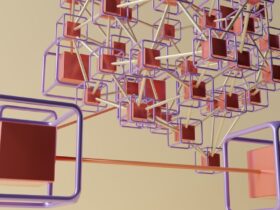Key Takeaways
- Distinguish between common plumbing myths and facts.
- Learn about the implications of ignoring plumbing issues.
- Discover the role of professional plumbers in maintaining plumbing systems.
- Access relevant external resources for further plumbing information.
Introduction to Common Plumbing Myths
Plumbing is essential to household functionality today, yet it remains shrouded in a haze of myths and misconceptions. Due to prevailing myths, many homeowners attempt to tackle plumbing issues, often with mixed success. These misconceptions can turn seemingly insignificant plumbing issues into nightmarish ordeals that drain resources and patience. This is where the expertise of a plumber becomes invaluable, as they can provide precise solutions that prevent further damage and expense.
The key to maintaining robust plumbing systems is understanding these myths and recognizing when to seek professional intervention. Accurate knowledge allows for informed decisions, safeguarding your home from unnecessary costs and disruptions. Dispelling these myths leads to long-term savings and enhances your living environment’s comfort and safety.
Myth vs. Reality: A Closer Look at Popular Beliefs
Numerous myths plague the plumbing world, and some stand out due to their prevalence. For instance, many believe that a dripping faucet doesn’t warrant immediate attention, viewing it as a minor nuisance rather than a critical issue. This misconception, however, ignores that even minor leaks can eventually result in significant water wastage, raising your water bill and causing needless environmental stress. Consider Family Handyman’s guide on water heaters to understand better water-saving techniques and the importance of regular water heater maintenance.
Fact: Regular Maintenance is Key
Maintenance is not merely beneficial but crucial to the health of your plumbing system. Unfortunately, myths such as “water heaters never need service” result in many homeowners neglecting essential upkeep. Regular maintenance is a preventative measure, catching potential problems before they escalate into emergencies. By taking preventative measures, you can increase the longevity and efficiency of your plumbing fixtures and appliances, saving you money in the long run and improving their functioning.
The Dangers of Ignoring Plumbing Issues
The dangers of ignoring plumbing issues are manifold, each with the potential for significant consequences. Leaking pipes and faulty water lines, for example, pose a dual threat: they waste water and create ideal conditions for mold growth, which can jeopardize both property value and the health of inhabitants. Similarly, ignored plumbing issues may cause structural harm, endangering your home’s structure and safety. By staying vigilant and promptly addressing even minor plumbing concerns, homeowners can prevent costly repairs and maintain the security and efficiency of their living spaces.
Effective DIY Practices vs. Professional Expertise
The advent of the internet has democratized knowledge, providing homeowners with numerous DIY solutions for common plumbing issues. However, the critical discernment lies in understanding the limitations of DIY methods. Simple problems such as minor blockages or dripping taps can be comfortably managed at home. Yet, persistent or complex problems often necessitate professional attention. Misjudging the severity of a plumbing issue can lead to exacerbated problems and higher costs. Explore Bob Vila’s plumbing repair guide to understand when to opt for professional assistance.
Professional plumbers bring experience and specialized tools that ensure accurate diagnosis and practical solutions. Their expertise can prevent common pitfalls of DIY attempts, providing peace of mind and guaranteeing long-term solutions rather than temporary fixes. Entrusting complex plumbing tasks to professionals lets you focus on what matters most while ensuring your plumbing system operates seamlessly.
The Role of Modern Technology in Plumbing
Technology integration into plumbing has transformed how issues are detected and resolved, offering unprecedented convenience and efficiency. Smart leak detectors, for instance, can alert homeowners to leaks as soon as they occur, allowing for swift intervention before problems escalate. Similarly, advanced inspection tools, such as video cameras for pipeline inspection, precisely assess plumbing conditions, identifying issues that might otherwise remain hidden until they cause significant damage.
Integration of Smart Technologies
Incorporating innovative technologies into your plumbing system ensures greater oversight and control. Features like real-time monitoring and automatic shut-off valves can prevent catastrophic water damage, protecting your home and valuables. This approach represents a significant advancement in maintaining a safe, sustainable living environment, demonstrating that informed homeowners can leverage technology for better home management.
Conclusion
Plumbing myths have the potential to derail even the best-intentioned home maintenance efforts. By understanding the realities behind these misconceptions, homeowners become empowered to make informed decisions about their plumbing systems, ensuring efficiency and longevity. Coupled with the strategic use of technology and professional expertise, a proactive approach to plumbing can transform potential headaches into manageable, even avoidable, situations. Thus, accurate knowledge and timely action hold the keys to maintaining a well-functioning plumbing system that supports your household needs seamlessly and efficiently.












